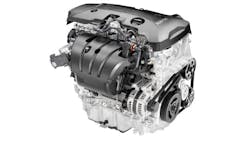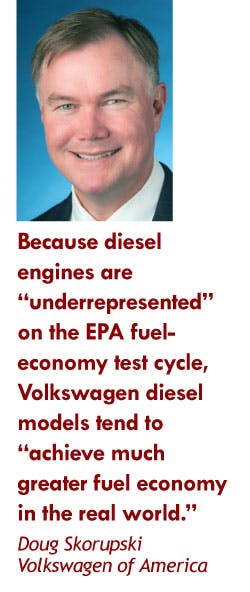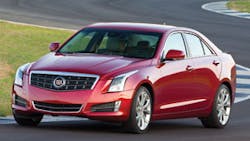In June, automotive blogger Wayne Gerdes and electronics engineer Bob Winger etched their names into the Guinness World Records by driving a Volkswagen Passat TDI Clean Diesel sedan on an 8,122-mile trip -- and averaging nearly 78 miles per gallon.
The trip, which took the duo through all 48 contiguous U.S. states, established the record for lowest fuel consumption for a non-hybrid. But that distinction is purely a Guinness quirk, as the diesel Passat also bested the record holder in the hybrid category -- a Kia Optima hybrid -- by nearly 14 miles per gallon.
See Also: Manufacturing Innovation & Product Development Strategy
While Gerdes and Winger are experienced "hypermilers" who used specialized techniques to maximize their gas mileage, Volkswagen of America emphasizes that even everyday drivers can become fuel misers when driving the automaker's turbocharged direct-injection (TDI) Clean Diesel models.
"We have seven models with diesel engines in them, and six of them have highway fuel-economy values that are over 40 mpg," says Doug Skorupski, technical strategy manager, product marketing and strategy, for Volkswagen of America.
And because the EPA testing protocols underestimate fuel economy for diesel vehicles, Skorupski explains, Volkswagen drivers tend to see even better mileage in the real world.
"The fuel efficiency of this technology is really the best-kept secret in the industry," Skorupski says.
To be sure, the economic and environmental imperative for EVs and other alternative-propulsion vehicles is compelling. Gasoline is getting more expensive; greenhouse gases are having a deleterious effect on the earth's atmosphere; and there's a finite supply of oil to quench our insatiable thirst for mobility.
But thanks to a host of engineering advancements -- from turbocharging to direct fuel injection to cylinder deactivation -- the century-old internal-combustion engine is leaner, meaner and greener than it's ever been.
Here to Stay
The average fuel economy of light-duty vehicles in the United States has jumped from 13.1 mpg in model-year 1975 to 23.8 mpg in model-year 2012, based on the EPA's latest data.
But those numbers don't tell the whole story. The auto industry has been cranking up fuel efficiency over the past few decades even as vehicle weight has ballooned -- thanks to the popularity of DVD players, navigation systems, side airbags and other features -- and as engine horsepower has hit record highs.
Meanwhile, despite all the ballyhoo about electric vehicles, EVs comprise less than 1% of new-vehicle sales -- and likely won't exceed that level for several decades, based on the projections.
"Whether anyone likes it or not, [internal-combustion] engines are going to be with us for a very long time," asserts Jason Kavanagh, engineering editor for Edmunds.com. "And there's good reason for it."
Smaller Engines
The maturation of turbocharging and the introduction of direct injection and variable-cam timing are perhaps the biggest reasons that the auto industry is continuing to wring more efficiency out of the internal-combustion engine.
Thanks to the boost in power density that these and other technologies provide, automakers are shifting to smaller-displacement four-cylinder engines that deliver much the same power as larger engines -- with far better fuel economy.
The downsizing trend is hard to miss on the showroom floor.
"Even just a few years back, a midsize sedan typically would have around a 3-liter six-cylinder engine in it as its bread and butter -- its high-volume runner, if you will," explains Mike Anderson, global chief engineer and program manager of large four-cylinder engines for General Motors Co.
"More and more today, those sedans have a turbocharged four-cylinder engine [as the high-volume runner], and a lot of them are four-cylinder-only lineups."
The Chevrolet Malibu belongs to the latter camp. With the 2013 model of the midsize sedan, GM phased out the only remaining V-6 and replaced it with an optional 2-liter turbocharged four-cylinder engine rated at 259 horsepower.
On the 2014 Chevrolet Impala, GM's new 2.5-liter four-cylinder EcoTec engine replaces a 3.6-liter V-6 as the standard offering on the full-size sedan. The engine uses technology called intake-valve lift control to moderate the amount of air that the engine pumps based on the driving demands, providing up to 1 mpg in improved fuel economy, according to GM.
Then there's the Cadillac ATS. Anderson notes that the "high-volume runner" for the compact luxury sports sedan is a 2-liter turbocharged four-cylinder engine, with an estimated output of 272 horsepower.
"You rewind just a few years back and you'd never think of a high-volume four-cylinder Cadillac," Anderson says.
Uphill Climb for EVs
As technology gives the internal-combustion engine a new lease on life, enthusiasm for the electric vehicle seems to be wavering.
In KPMG LLP's 14th Annual Global Automotive Executive Survey, 71% of auto executives said they believe that improvements to the internal-combustion engine will continue to offer more potential for gains in fuel efficiency and emissions reduction than the electric vehicle for at least the next six to 10 years.
The execs are backing up that sentiment with dollars. Some 31% of OEM executives said the majority of their expenditures for powertrain R&D in the next five years will go into internal-combustion engines. Another 29% said their R&D investments will focus on plug-in hybrids (which, of course, have internal-combustion engines).
"Ultimately, where they're putting their R&D and investment dollars speaks quite loudly," says Gary Silberg, national leader of KPMG's U.S. automotive practice.
There's something else working in favor of the internal-combustion engine, says Kavanagh: its "highly evolved and refined" global fuel-delivery infrastructure, which presents a towering barrier to entry for the electric vehicle or any other alternative-propulsion contender that emerges.
And then there's the fuel itself. In a recent Edmunds.com article exploring the future viability of internal-combustion engines, Kavanagh asserts that gasoline is a "very talented energy source."
"It packs more energy into a given amount of volume than anything short of nuclear materials," Kavanagh wrote. "It's also lightweight, relatively abundant, and it exists in an easy-to-use liquid state at every temperature [that] humans operate cars, trucks, boats, motorcycles, scooters and airplanes."
Indeed, the infrastructure advantages that gasoline- and diesel-burning engines enjoy -- and the infrastructure challenges that electric vehicles face -- might be the biggest reasons that internal-combustion engines are here to stay, says Bill May, managing director for BBK's Nashville region.
"If every vehicle on the road today was battery-powered, I couldn't imagine how we could generate sufficient electricity to charge them all," May says. "The electric grid in this country can barely maintain what we're doing now."
May, a former longtime manufacturing manager for General Motors, believes that the advent of computerization has been the key to the internal-combustion engine's evolution. Ever more sophisticated computer controls and sensors will enable engineers to continue to make the century-old technology relevant, he says -- even as the auto industry braces for stringent fuel-economy standards set to kick in by 2025.
"The internal-combustion engine will not go away because of the current fuel-economy standards," May says. "It just won't. There's just nothing out there to replace it."
About the Author
Josh Cable
Former Senior Editor
Former Senior Editor Josh Cable covered innovation issues -- including trends and best practices in R&D, process improvement and product development. He also reported on the best practices of the most successful companies and executives in the world of transportation manufacturing, which encompasses the aerospace, automotive, rail and shipbuilding sectors.
Josh also led the IndustryWeek Manufacturing Hall of Fame, IW’s annual tribute to the most influential executives and thought leaders in U.S. manufacturing history.
Before joining IndustryWeek, Josh was the editor-in-chief of Penton Media’s Government Product News and Government Procurement. He also was an award-winning beat reporter for several small newspapers in Northeast Ohio.
Josh received his BFA in creative writing from Bowling Green University, and continued his professional development through course-work at Ohio University and Cuyahoga Community College.
A lifelong resident of the Buckeye State, Josh currently lives in the Tremont neighborhood of Cleveland. When the weather cooperates, you’ll find him riding his bike to work, exercising his green thumb in the backyard or playing ultimate Frisbee.


